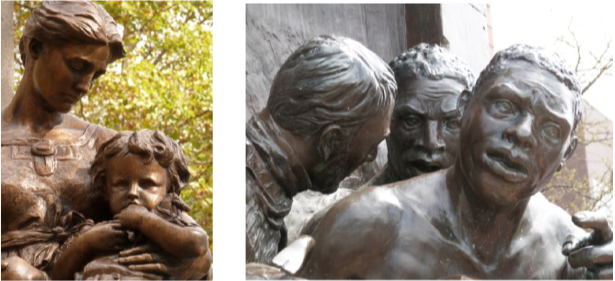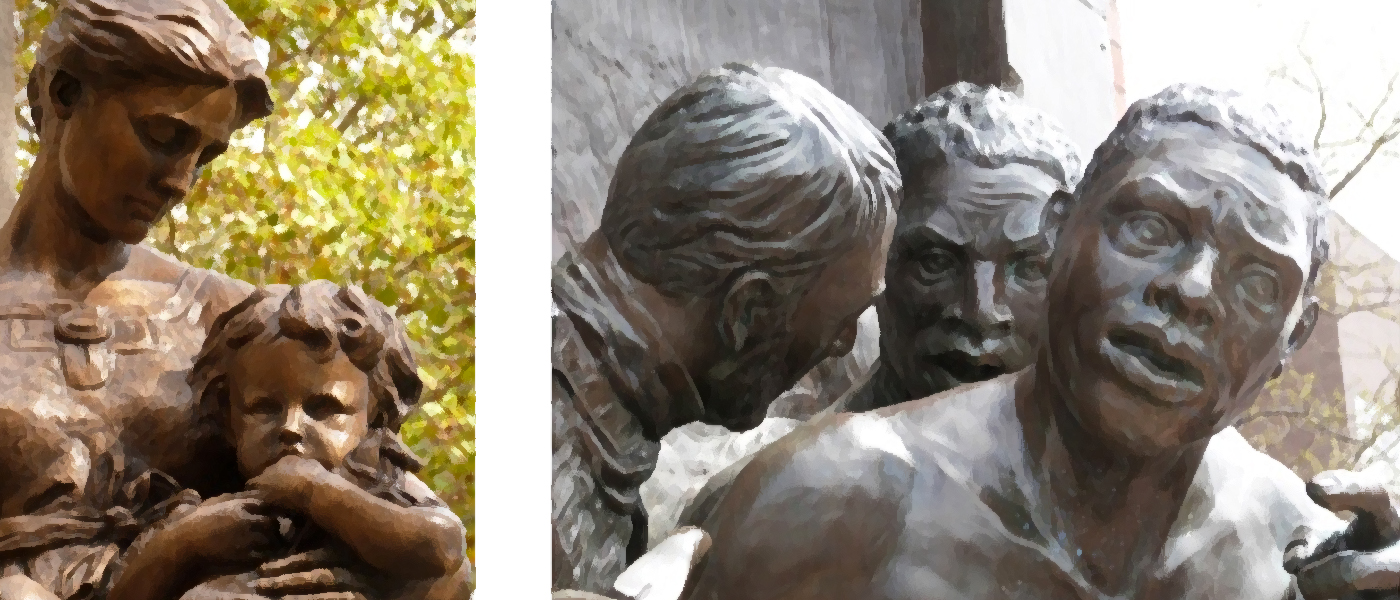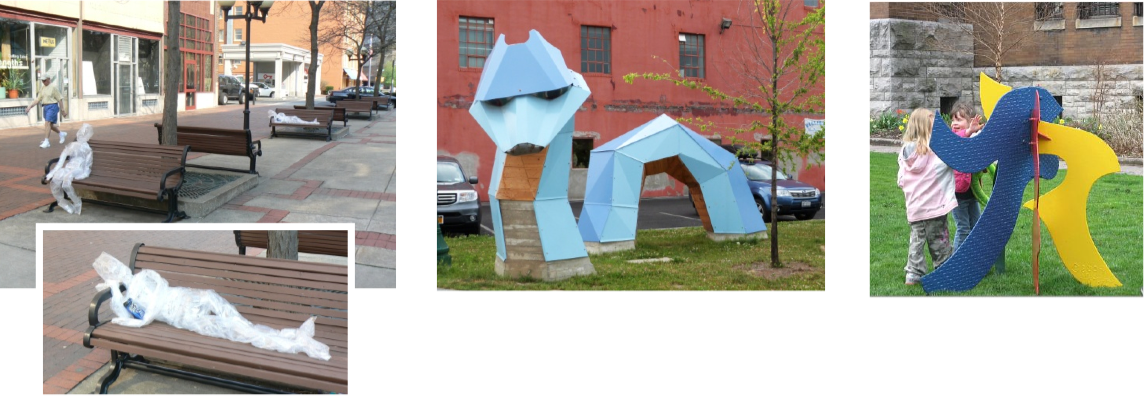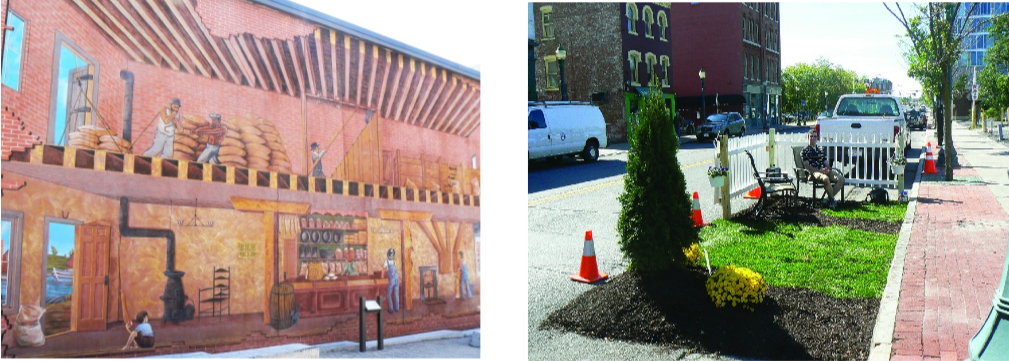As part of the Connective Corridor’s call for public art, in partnership with the Syracuse University College of Visual and Performing Arts, we’ve asked our local steering committee members to share some thoughts in this weekly blogpost. Thanks to our collaborators at the Syracuse New Times for providing this forum for thoughtful conversation about the importance of public art.
How does public art add to the downtown lifestyle? This question is best answered in a statement by Americans for the Arts: “Cities gain value through public art – cultural, social, and economic value. Public art is a distinguishing part of our public history and our evolving culture. It reflects and reveals our society, adds meaning to our cities, and uniqueness to our communities. Public art humanizes the built environment and invigorates public spaces. It provides an intersection between past, present and future; between disciplines, and between ideas.”
WATCH: Creative Placemaking and Public Art
Public art highlights the diverse cultural base upon which our city was formed and continues to thrive. It provides a cross section of the population with exposure and accessibility to art and history.
Public art often reflects a moment in time, a slice of the past, and the emotion of an occasion or circumstance. Peering into the eyes of a figure cast in bronze deepens our perspective.
 Studying the abstract form opens the mind to endless possibilities.
Experiencing the whimsy of art activates our imagination.
Public art can alter our reality and transform our perceptions of the environment we occupy.
Studying the abstract form opens the mind to endless possibilities.
Experiencing the whimsy of art activates our imagination.
Public art can alter our reality and transform our perceptions of the environment we occupy.

 Studying the abstract form opens the mind to endless possibilities.
Experiencing the whimsy of art activates our imagination.
Public art can alter our reality and transform our perceptions of the environment we occupy.
Studying the abstract form opens the mind to endless possibilities.
Experiencing the whimsy of art activates our imagination.
Public art can alter our reality and transform our perceptions of the environment we occupy.
What the experts say:
“Public art can enhance the experience of traveling through urban places and improve a community’s quality of life. Public art allows us to create an environment to keep our senses engaged.” Ed Lebow, Phoenix, AZ, Public Art Program Director “Public art is far more than mere aesthetic adornment but should be seen as constitutive of the city. In the same way as we accept that architects and planners build cities, so art actively contributes to the construction of the urban (environment), and the citizen is central in that process.” Nicholas Whybrow, author of Art and the City “The most effective method to make art a meaningful part of life is to integrate it into public spaces.” Ahsen Özsoy, Architecture faculty, Istanbul Technical University, author of The Role of Public Art for Improving the Quality of Public Spaces in the Residential Environment “Creative workers need and want to live in authentic communities. Public art that is tied intrinsically to its community will help to create a sense of place that is unique and appealing to creative workers. Public art can also help highlight a community’s soul, history, and uniqueness. Public art helps to place a connection between the authentic identity around us and the place we live.” Richard Florida, author of the Rise of the Creative Class “Social offerings, openness and welcome-ness, and, importantly, the aesthetics of a place – its art, parks, and green spaces, ranked higher than education, safety, and the local economy as a driver of attachment to a community.” The Knight Foundation, “Soul of the Community” Initiative A survey of 43,000 people in 26 communities over a three-year period Public art is an essential component in the landscape of a city. It attracts people to a community who contribute diverse talents, knowledge, skills, and motivations to the culture. It stimulates collaborations and partnerships, as well as community ownership. It helps to define our community identity, spirit and pride, as well as our sense of place. In characterizing city neighborhoods, what could be more iconic than the LOVE sculpture in Philadelphia’s Love Park, or Christopher Columbus in Downtown Syracuse’s Columbus Circle, or the charging bull on Wall Street? Our civic spaces are enhanced by public art, and our quality of life is enriched. It highlights our diversity and heritage, and invites interaction with our environment. Communities rich in public art are more beautiful to those who live, work, and play there and more welcoming to those who visit. Take a moment to take our sruvey:
Create your free online surveys with SurveyMonkey , the world’s leading questionnaire tool.
This week’s post is by Laurie Reed, Marketing Director for the Downtown Committee. The Downtown Committee has been involved in in a number of recent public art projects; from Laurie’s instrumental role in refurbishing two murals last year, to the role of Adria Finch, Economic Development Specialist for the Downtown Committee, who spearheaded the implementation of “Flowscape” in Perseverance Park downtown and is also as a member of the Connective Corridor’s Public Art Steering Committee.
Keep your comments coming. We’re sharing them with the jury and steering committee as they begin working through the 276 applications from around the globe!














